Chinchilla toys: requirements, tips for choosing and making
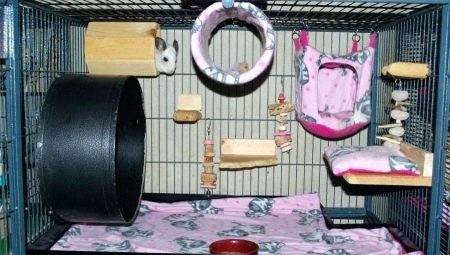
At first glance, a chinchilla can be assessed as a sedentary and calm pet. But in fact, the animal loves games, and he himself is friendly and active. Chinchillas like different entertainment, they want to try new toys. When buying such an animal home, you must take this into account.

Features and requirements
The chinchilla's hind legs are very strong, for this reason jumping is the main method of movement. The rodent must constantly do exercises: jump and stretch its paws. The best machines are the shelves. It is recommended to purchase wooden shelves so that the animal can sharpen its teeth.
But the shelves, which are made of softwood, oak and cherry trees, should not be bought. The fact is that these trees contain resin, and if the animal suddenly wants to try it, then his digestion will be disturbed.
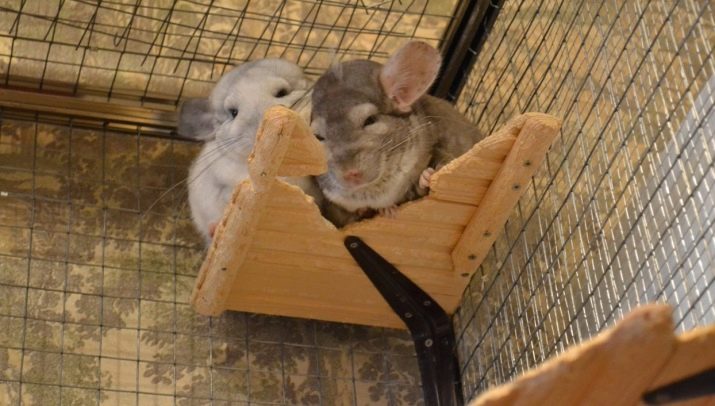
Also, you do not need to purchase shelves that are painted, varnished or impregnated with any chemical agents.
If you want to make shelves with your own hands, then the tree needs to be washed well, treated with boiled water and dried.
Chinchilla shelves can be placed at different levels. Place them at a height of no more than 82 centimeters, this parameter is safe for the animal.
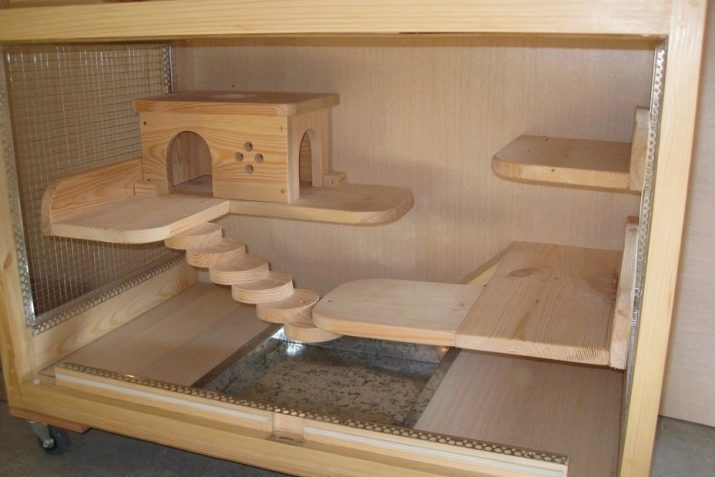
The animal can also appreciate the running wheel. But you need to carefully select this accessory. There are four types of wheels: plastic, metal, aluminum and wood.
Metal wheels are considered the most dangerous because they can be made with mesh crossbars. Chinchilla's paws or toes can accidentally fall into this net.In addition, the metal stand on which the wheel is attached is also unsafe for the animal if there are several animals in the cage. If one pet is doing exercises in the wheel, then the other can stick its head between the wheel and the stand. And this will entail injury.

An aluminum wheel can also be used. The structure is usually attached to the wall, so there is no need to purchase an additional stand.
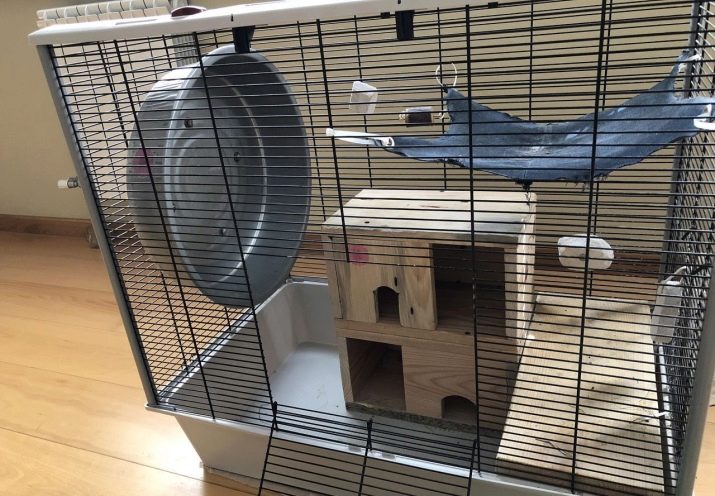
Plastic wheels are also attached to the cage wall and do not have a stand. The disadvantage of a plastic wheel is its diameter, which is 34 centimeters at a maximum. This diameter will be too small for the animal.

A wooden wheel is a very good and environmentally friendly option. The advantages are that the design has no sharp corners and mesh cells. There are also disadvantages: wood absorbs moisture and various odors, it will not work to wash a dirty surface, it will be impossible to get rid of bad odors.
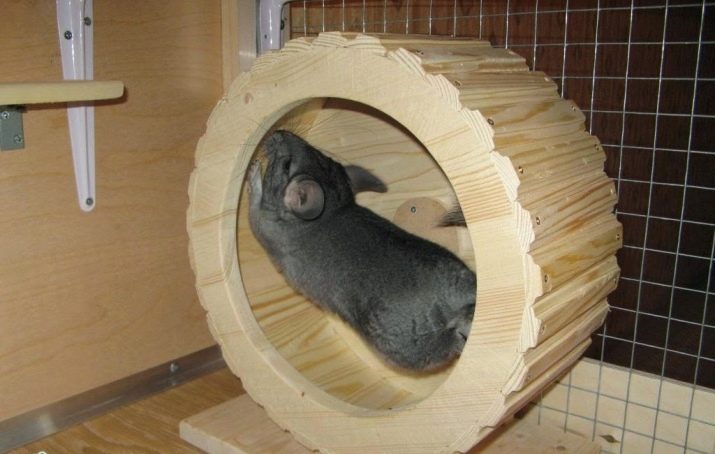
You can also put a branch inside the cage. This option will be pleasant and useful, since the chinchilla will climb along the branch and at the same time gnaw, grinding its teeth. You can independently make different ladders and ladders from branches for your pet.
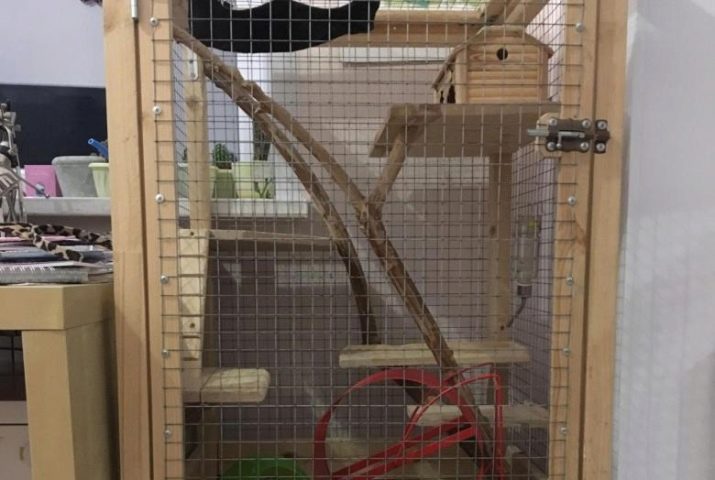
remember, that in the cage you need to have different, but safe toys that can improve the life of the chinchilla... All accessories must be put in the cage one by one so that they do not become boring to the pet.
In addition, do not clutter up the space with too many toys, as the chinchilla needs free movement around its territory.
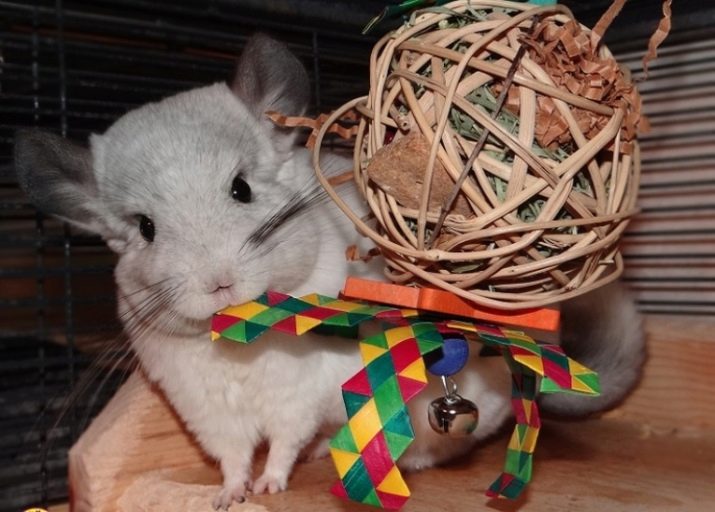
An excellent option is to walk your pet around the apartment. For this you will need walking ball, if it is not there, the chinchilla can run away or damage itself something. A walking ball is a small transparent or colored toy, in which the chinchilla moves around the apartment. Every owner of a hamster, rat or chinchilla should have a similar element of walking.
It is not necessary to walk a pet, but such "promenades" strengthen the health of the animal.
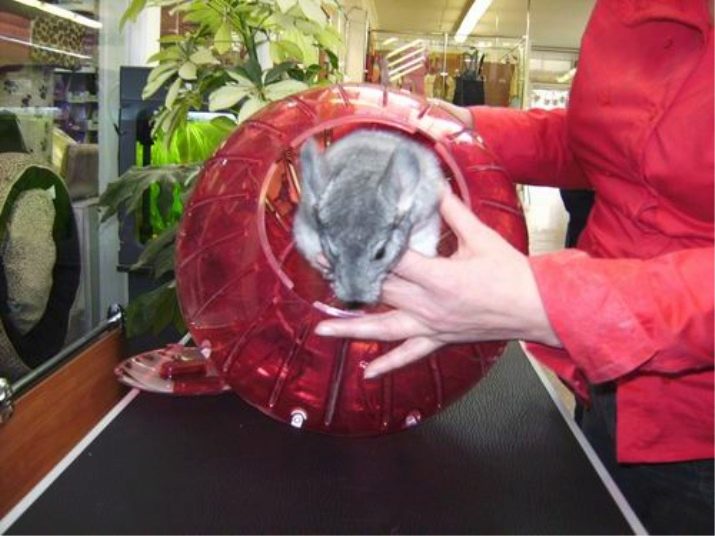
Before you release your pet, you need to prepare the territory and put things in order. There should be little furniture in the apartment; the animal should not be allowed to chew on wires and cables. The animal is released from the cage, but the cage itself does not need to be closed so that the pet can hide in it whenever it wants. Then you need to sit on the floor and not make sudden movements so that the pet can get used to it.
Allow your pet to climb on your shoulder, this will help the chinchilla to loosen up.
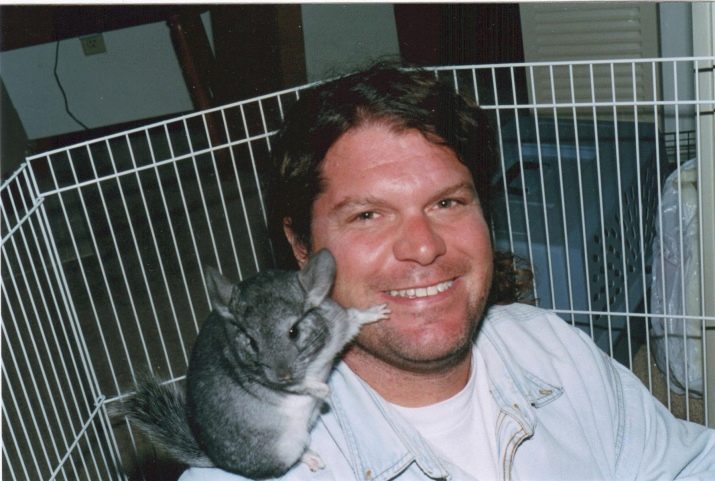
Views
There are many chinchilla toys in any pet store. Each pet has its own preferences, so the owner needs to know what his pet likes. The animal must choose a toy for itself. For example, if you push a ball in his direction, the animal can bring it by itself. But there are also pets who do not want to react to the ball at all, if this happens, go through the options until the pet chooses something.

If a new toy appears in the animal's cage, then it is necessary to observe its reaction and understand whether the pet liked the toy or not. You also need to be aware that there are items that pose a threat to the health of a pet.
It is necessary to protect the chinchilla from unsafe toys.
There are two categories of chinchilla toys:
- static: slides, tunnels and others;
- movable: balls, wheelchairs, twigs.
Static accessories may not only be fun for the chinchilla, but also become a decoration in the house. The pet can be played by itself, without the participation of the owner. And movable accessories are usually designed for both games and for a good pastime of the animal outside the cage, where the presence of the owner is already required.
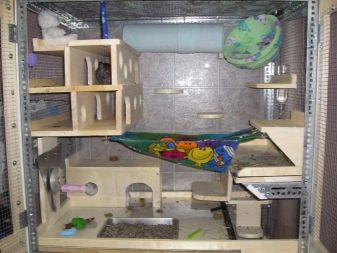
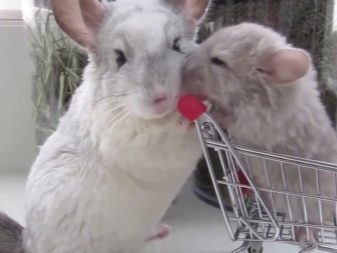
One of the chinchilla's favorite toys are tunnels... In the tunnels, pets can hide, make their way and have fun running after each other.
The main thing is that the diameter is about 32-42 centimeters. Thanks to this diameter, the pet will not be able to get stuck.
To make this accessory, you need to use plastic or wood. Wooden tunnels should have metal edging to prevent your pet from chewing on the edges.
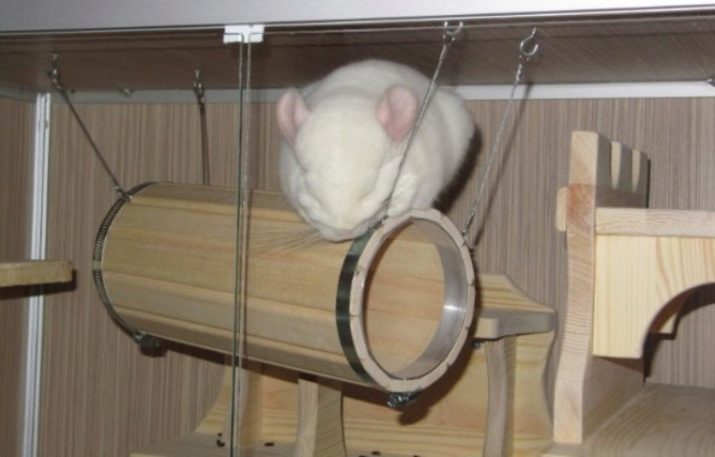
Plastic tunnels can be produced in various forms. Plastic tunnels can be disassembled and assembled into various shapes. If the tunnels are made of translucent plastic, then the animal will feel comfort and safety in them, and the owner will always find his pet.
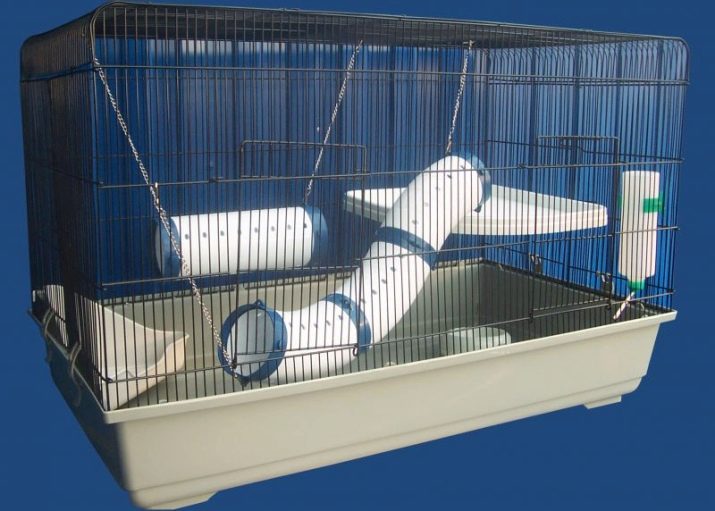
Consider what else you can think of for a chinchilla.
- Hammocks usually placed inside the cage. On a hammock, you can not only relax, but also swing in different directions, using it as a swing. To create a hammock, materials such as wood, strong fabric, ropes, flexible but strong plastic are used. Hammocks can be single-tiered and two-tiered (pipe-shaped).
At the same time, bunk hammocks have more options. When danger arises or it gets cold, the pet can hide inside the hammock.

- Active pets may like different ladders. Thanks to them, the legs will always be strong, and the animal will be more resilient. If the stairs near the animal's dwelling are installed vertically, then the pet will be able to clean its fur on it, scratch its back and sharpen its teeth. Wooden shelves can be used as stairs.
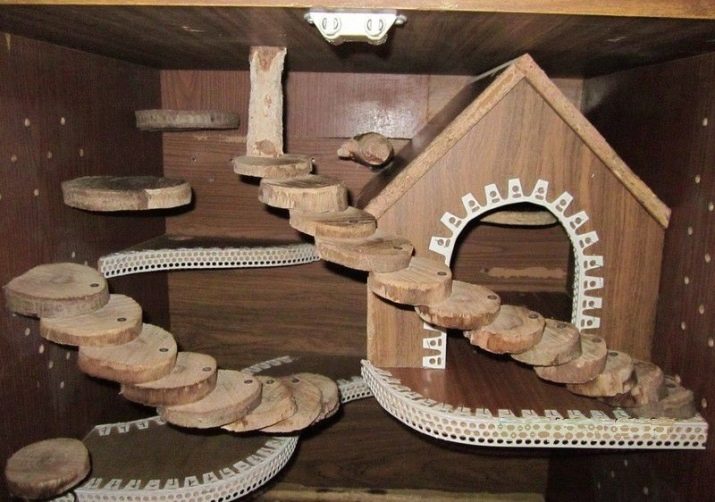
- With the help of dynamic toys and accessories, the pet will develop well... Animals love hanging accessories that shake, wobble, clatter and clink. Animals like to push objects or swing them in different directions. There were also such cases when the animal grinded its teeth on the toy.
However, it should be borne in mind that interest in such toys wakes up in chinchillas closer to the night. Not everyone will like too loud sounds, so in the evening it is necessary to remove the ringing accessories away from the pet. This will help the animal and you to rest during the night.
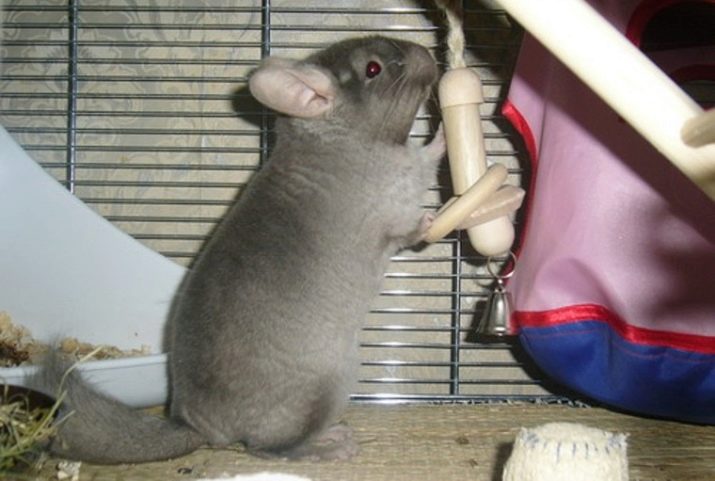
Selection rules
Before giving any accessories to chinchillas, you need to know the rules and regulations for the use of these toys. First you need to understand what material the accessory is made of. It is forbidden for chinchillas to give toys made from:
- rubber;
- low-quality plastics;
- cement;
- lime;
- paper;
- cardboard;
- glass.
Also, some of the types of wood are contraindicated for these pets.


There are some other selection rules that you will have to consider when buying.
- The chinchilla will be able to bite and swallow small objects.
- You cannot buy toys that have been painted, because the skin of the animal can rub against the paint, which can lead to poisoning. It is better to purchase accessories that have neutral tones or are completely colorless.
- It is forbidden to buy toys with sharp corners and notches, because the chinchilla can get hurt.
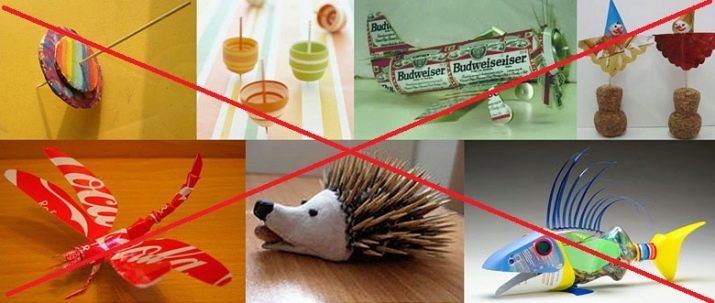
How to do it yourself?
You can make various toys for the animal with your own hands, so you will definitely be sure of the environmental friendliness and benefits of the resulting product.
Shelf
To make a shelf, you must follow the following rules:
- choose a small wooden board;
- rinse the workpiece thoroughly so that parasites do not appear in the product;
- the board must dry completely;
- sand the board so that no chipping, sharp corners, roughness remains on it;
- set the shelf at the required level;
- Place ledges throughout the house at various levels so that the pet can jump in different directions.
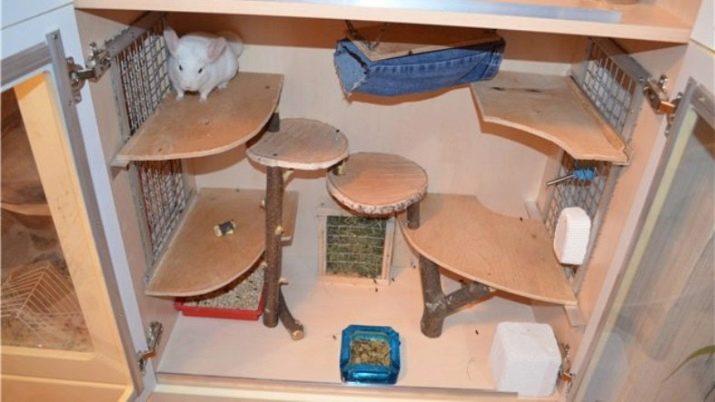
Hammock
You can also design a hammock yourself. For this you will need:
- 2 cuts of strong denim or fleece fabric 47x47 cm;
- threads;
- tape for the edge;
- needles;
- scissors.
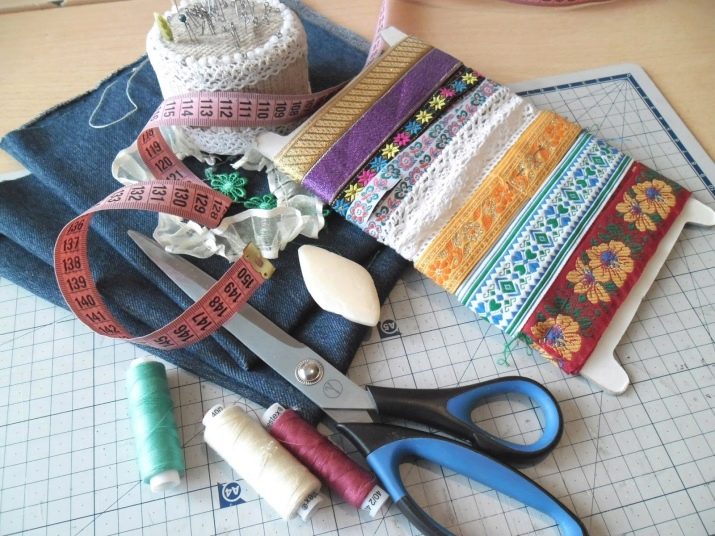
Making a hammock looks like this.
- Make a pattern. You can print a photo and use it to cut a pattern along the contour.
- Attach the pattern to the fabric and cut out 2 identical pieces.
- Mark seams at the edges, then tape over these edges with an edge band. There should also be loops at the edges.They will help you hang the hammock.
- Use a regular seam to secure the edging tape.
- Pass small carabiners through the loops. With the help of carabiners, you need to hang the hammock on the roof of the cage so that the chinchilla can climb on it.
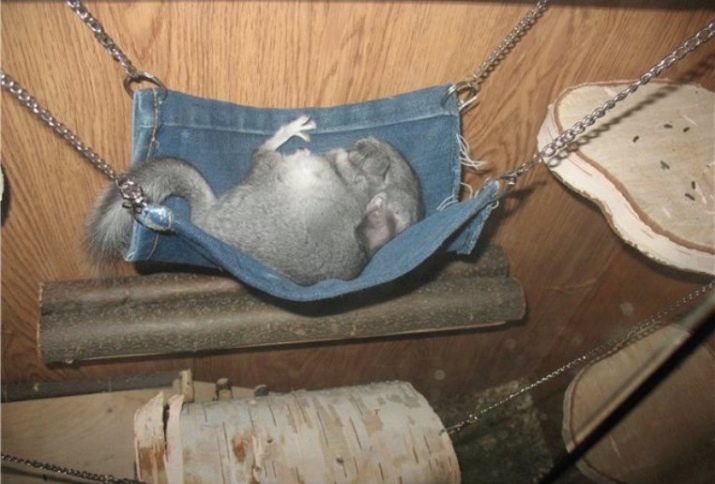
Some scrap materials can also be toys for chinchillas. At the same time, it often turns out that you don't even need to go to the store, because chinchillas can happily play with improvised things. Give your pet things to chew, roll, push.
- Chinchillas can constantly roll walnuts inside the cage. In addition, they will love a wooden or plastic ball.
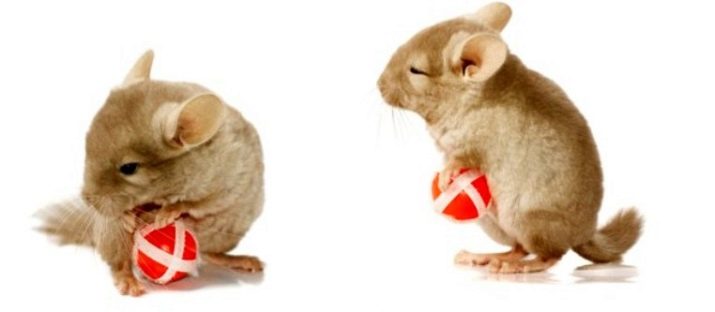
- A thread spool made of wood will become not only an interesting toy, but also a good sharpener for animal teeth.

- A small piece of tight rope tied in a knot at the ends can also become a toy for chinchillas. But this subject must be given with caution. It is necessary to ensure that the pet does not swallow the threads, which can harm the stomach.


You can see how to make a toy for chinchillas with your own hands in the next video.








